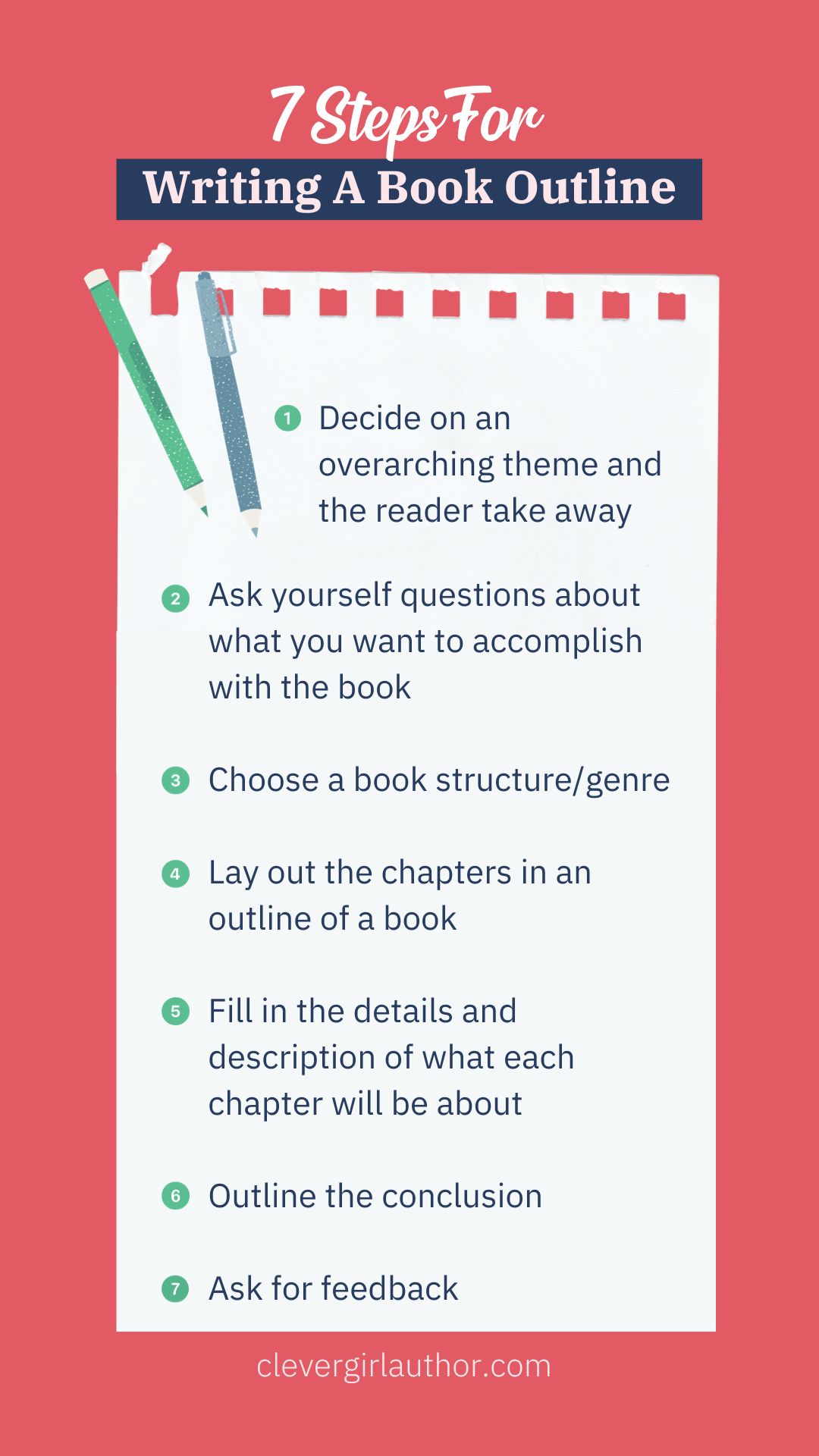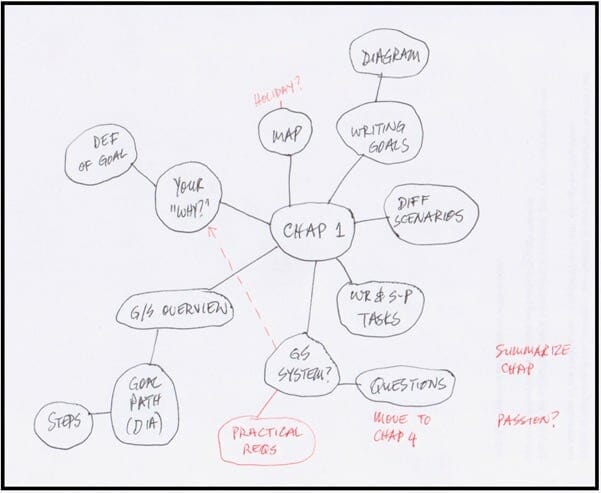How To Write A Book Outline: Step-by-Step Guide for Success
Writing a book can be a daunting task. A solid outline can simplify the process.
Creating a book outline is a crucial first step in writing a book. It helps organize your thoughts and provides a roadmap for your writing journey. With a clear outline, you can ensure that your story flows logically and that you cover all essential points.
This guide will show you the steps to create an effective book outline. Whether you’re a first-time author or an experienced writer, a well-crafted outline can make your writing process smoother and more efficient. Ready to get started? Let’s dive into the details of crafting a book outline that will set you up for success.

Credit: www.clevergirlauthor.com
Benefits Of An Outline
Writing a book can be a daunting task. Creating an outline can simplify the process. An outline serves as a roadmap for your writing journey. Let’s explore the benefits of having an outline.
Keeps You Organized
An outline keeps your ideas in order. It ensures you cover all key points. You won’t miss important details. It helps you stick to the main plot. You can easily track your progress. Your chapters will flow logically. Readers will find your book easier to follow.
Streamlines The Writing Process
With an outline, you know what to write next. It reduces writer’s block. You spend less time thinking about the next step. This speeds up the writing process. An outline helps you stay focused. You can write more efficiently. It makes revising your book easier.
Preparing Your Outline
Writing a book outline is a crucial first step. It provides a clear roadmap. This helps you stay focused and organized. Preparing your outline involves several steps. Each step ensures your story flows smoothly.
Choose Your Structure
Decide on a structure for your book. Will it be a three-act structure? Or perhaps a more complex narrative? Choosing the right structure sets the foundation. It helps you map out the beginning, middle, and end.
Consider what works best for your story. A clear structure keeps your writing on track. It also makes it easier for readers to follow along.
Identify Key Elements
Next, identify the key elements of your story. Who are the main characters? What are the major plot points? Knowing these elements helps you build a strong outline.
Write down the main conflict. Note the resolution. Think about the settings and important scenes. This helps you see the big picture. It ensures all parts of your story connect well.
Having these elements in place makes writing easier. It gives you a clear path to follow. This way, you can focus on bringing your story to life.
Creating Your Outline
Writing a book outline is the first step to crafting a compelling story. An outline helps you organize your thoughts and plot points. It ensures your story flows smoothly. Let’s dive into creating your outline.
Develop Main Points
Start by deciding your book’s key events. These are your main points. Think about the beginning, middle, and end of your story. What happens in each part? Jot down these events as they come to mind. Don’t worry about order yet.
Next, arrange these points in a logical sequence. This will be your story’s backbone. Make sure each point naturally leads to the next. Your readers should never feel lost.
Add Supporting Details
Once you have your main points, add supporting details. These details flesh out your story. They include subplots, character development, and settings. Think about what makes each main point interesting. What smaller events lead up to it?
Write these supporting details under each main point. Make sure they enhance the main event. Your outline should now look more detailed. It should give you a clear roadmap of your story.
Review your outline. Does it make sense? Is the story engaging? If not, tweak your main points and supporting details. Your outline is a living document. Adjust it as your story evolves.
Credit: www.squibler.io
Refining Your Outline
Refining your book outline is a crucial step. It transforms your initial ideas into a solid foundation for your book. This process involves reviewing, revising, and seeking feedback. Each step ensures your outline is clear, coherent, and compelling. Below, we will explore these steps in detail.
Review And Revise
Start by reviewing your outline. Look at each section and chapter. Ensure they flow logically. Ask yourself these questions:
- Does each section contribute to the main theme?
- Are any sections redundant or irrelevant?
- Is there a natural progression from one chapter to the next?
Next, revise your outline. Make necessary adjustments. This might mean adding new sections. Or deleting unnecessary ones. It could also involve reordering chapters. Use the feedback from your review to guide these changes.
Here are some tips to keep in mind:
- Be open to changes. Your first draft is not perfect.
- Keep your audience in mind. What do they want to know?
- Stay focused on your main theme.
Seek Feedback
Feedback is invaluable. It offers new perspectives. Share your outline with trusted friends. Or colleagues. They can provide constructive criticism. This helps identify any weaknesses in your outline.
Here are some questions to ask for feedback:
- Is the outline clear and easy to follow?
- Are any sections confusing or unclear?
- Does the outline cover the topic comprehensively?
Consider using a table to track feedback:
| Feedback Source | Comments | Action Taken |
|---|---|---|
| Friend 1 | Chapter 2 is unclear. | Revised for clarity. |
| Colleague | Need more examples in Chapter 4. | Added additional examples. |
Refining your outline is a continuous process. Keep reviewing, revising, and seeking feedback. This ensures your outline is strong and effective. Happy writing!

Credit: selfpublishing.com
Frequently Asked Questions
What Is A Book Outline?
A book outline is a structured plan. It details the chapters, plot points, and character development.
Why Is A Book Outline Important?
A book outline helps organize your thoughts. It ensures a clear, logical flow for your story.
How Do I Start A Book Outline?
Start with the main idea. Break it into chapters. Add key events and character details.
Conclusion
Crafting a book outline simplifies the writing process. It keeps your ideas organized and focused. A clear outline helps you track progress and maintain momentum. It also makes revisions easier and more effective. Remember to stay flexible and adjust your outline as needed.
This approach can boost your confidence and creativity. Start outlining today and watch your story come to life. Writing a book becomes less daunting with a solid plan. Keep your outline clear, and your writing will flow smoothly. Happy writing!


